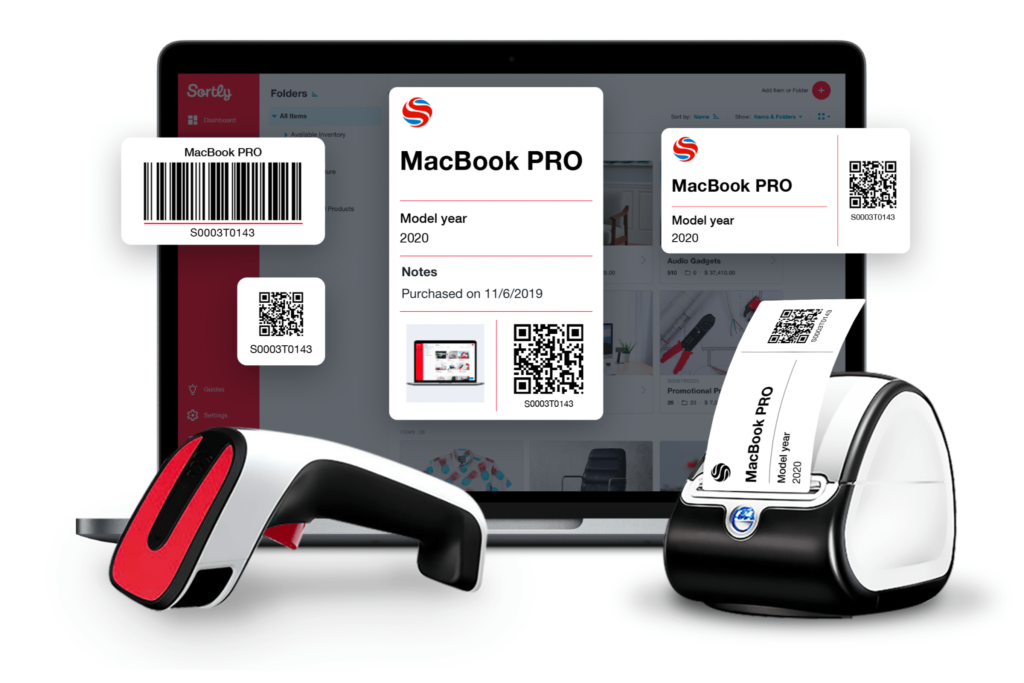Many businesses need to track assets or inventory—and some companies need to track both. Whether you run a local coffee shop, an e-commerce website, or a law firm with offices nationwide, chances are your business needs to track something.
In this article, we’ll help you differentiate between inventory and assets. Then, we’ll help you determine how best to keep track of your business’s valuable investments.
What is the difference between asset and inventory?
An asset is something your business owns and uses, such as laptops or office chairs. On the other hand, inventory is something your company intends to sell, rent or consume—whether it’s a finished good, a work in progress, or raw materials.
Here’s a little bit more info on each type of item:
More about inventory assets
An inventory asset is anything a company uses internally.
For example, a medium-sized company’s IT department probably tracks a ton of assets. Every time a new employee joins the team, the new hire is likely issued a laptop, monitor, docking station, keyboard, and mouse. The IT department may ship all this equipment from one city to wherever the new employee works.
You would almost certainly find a barcode or QR code affixed to the employee’s laptop if you looked closely. That’s because the IT department tracks its assets, even though they aren’t being bought and sold. The IT team needs to know what’s where and who’s got it!
By utilizing barcodes or QR codes, businesses can automate their asset tracking. Barcode and QR code systems reduce human error, save tons of time, and help make inventory management a breeze. Many modern inventory apps and inventory software allow you to scan barcodes and QR codes using a smartphone.
Apps like Sortly will enable you to create and print custom barcodes and QR codes so that you can track assets like laptops, computer chairs, and more.
More about traditional inventory
Experience the simplest inventory management software.
Are you ready to transform how your business does inventory?
Unlike assets, traditional inventory items are either finished goods, raw materials, work in progress, or MRO supplies.
Finished goods inventory is ready to be sold, rented, or consumed. Examples include t-shirts, grab-and-go sandwiches, and filled prescriptions.
Raw materials inventory includes everything your business needs to create a finished good. A pharmacy needs pill bottles and caps, labels, and the medication itself to fill a prescription. They can’t sell these items to you until they’ve bundled them together, just so.
Work-in-progress inventory is inventory that’s no longer raw materials but isn’t yet a finished good. For example, a half-assembled backyard shed is WIP inventory.
MRO inventory refers to maintenance, repair, and overhaul inventory. Businesses need MRO inventory to stock, assemble and sell finished products. Lightbulbs and cleaning supplies are both MRO inventory. A jeweler, for example, requires a cleaning solution and microfiber rags to polish engagement rings before selling them.
Related: What are the four types of inventory?
How to track assets and inventory

Whether your business tracks standing desks or ski shoes, the right inventory management system is vital. In general, there are three different types of inventory management systems: pen-and-paper, spreadsheet, and software.
Pen-and-paper inventory is quite simple. Of course, this type of inventory system offers no automation. A tiny business, perhaps with only one employee, might get by keeping track of inventory manually.
A spreadsheet inventory system is definitely a step in the right direction. Still, spreadsheet inventories are time-consuming, outdated, and notoriously error-prone. They also don’t correctly display images and cannot offer any barcode or QR code scanning.
Finally, inventory software or an inventory app allows businesses a more modern, less annoying way to track their inventory. There are a variety of products on the market, at all sorts of price points. Look for a product that offers powerful features like barcode and QR code scanning, low stock alerts, and tons of other customizable features.
Ready to get your assets and inventory organized? Give Sortly a try today, totally free.




